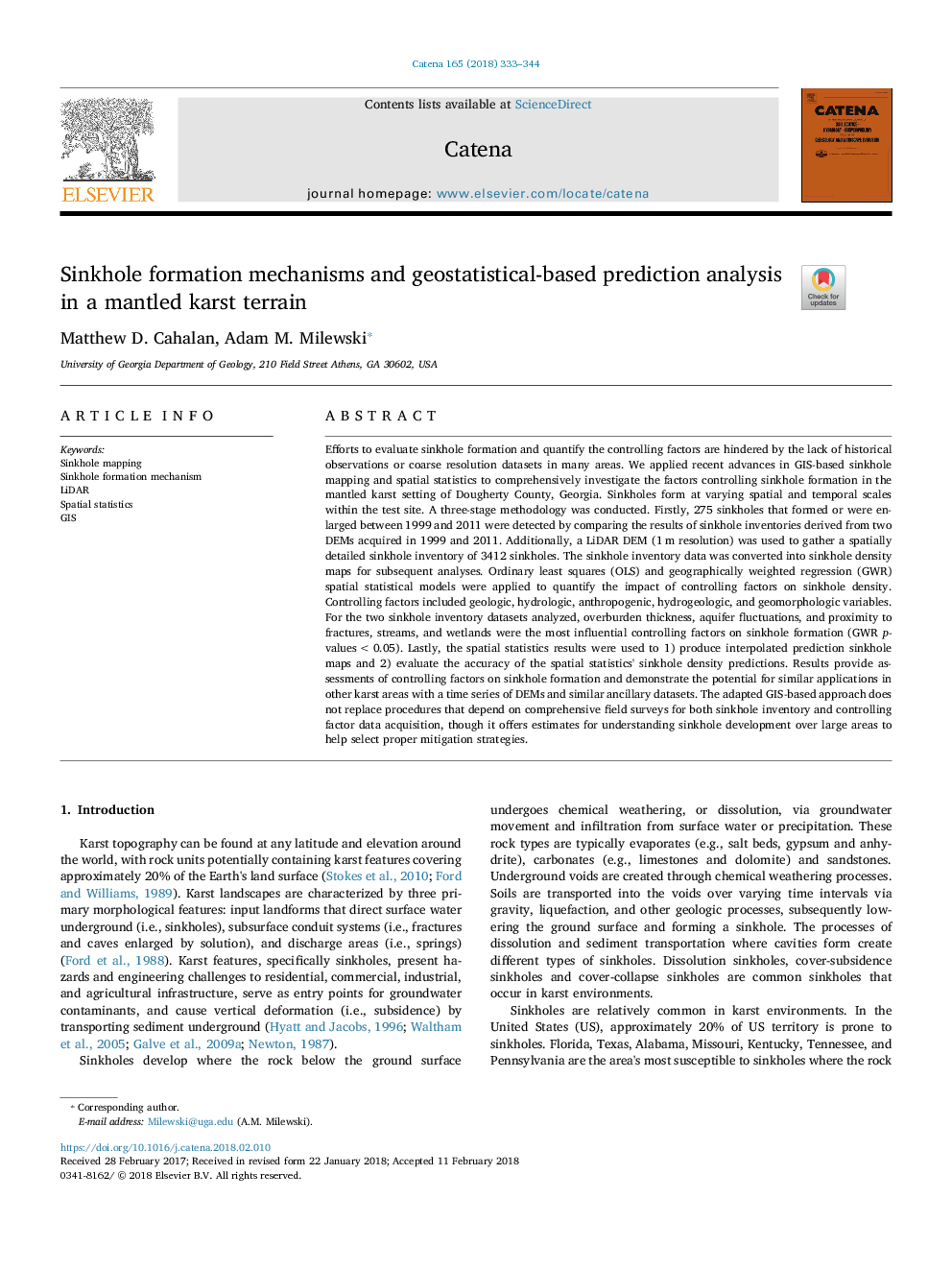ترجمه فارسی عنوان مقاله
مکانیسم شکل گیری سینکول و تجزیه و تحلیل پیش بینی های ژئواستاتستیک در یک زمین لرزه کارنت
عنوان انگلیسی
Sinkhole formation mechanisms and geostatistical-based prediction analysis in a mantled karst terrain
| کد مقاله | سال انتشار | تعداد صفحات مقاله انگلیسی |
|---|---|---|
| 88736 | 2018 | 12 صفحه PDF |
منبع

Publisher : Elsevier - Science Direct (الزویر - ساینس دایرکت)
Journal : CATENA, Volume 165, June 2018, Pages 333-344

